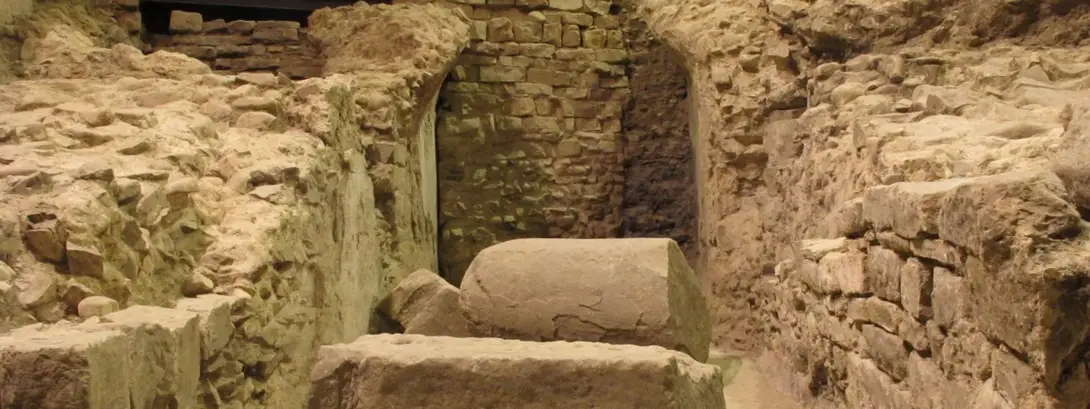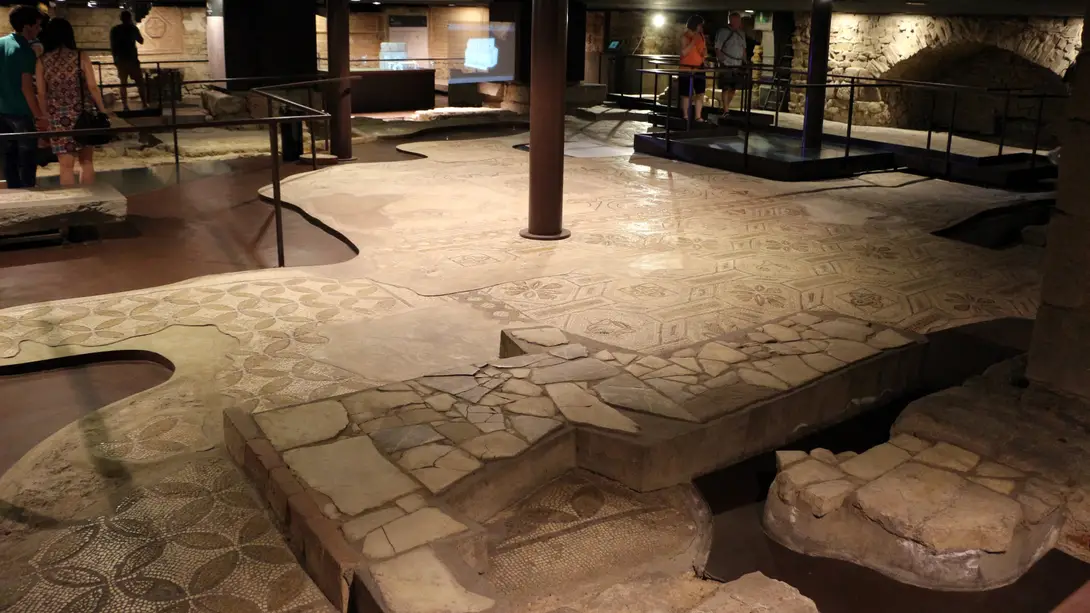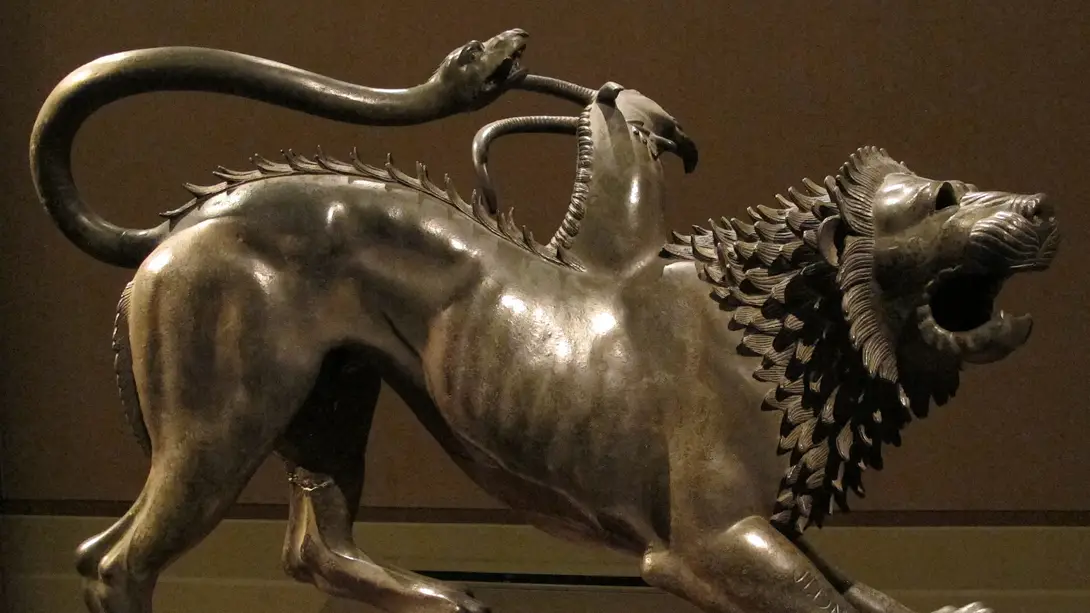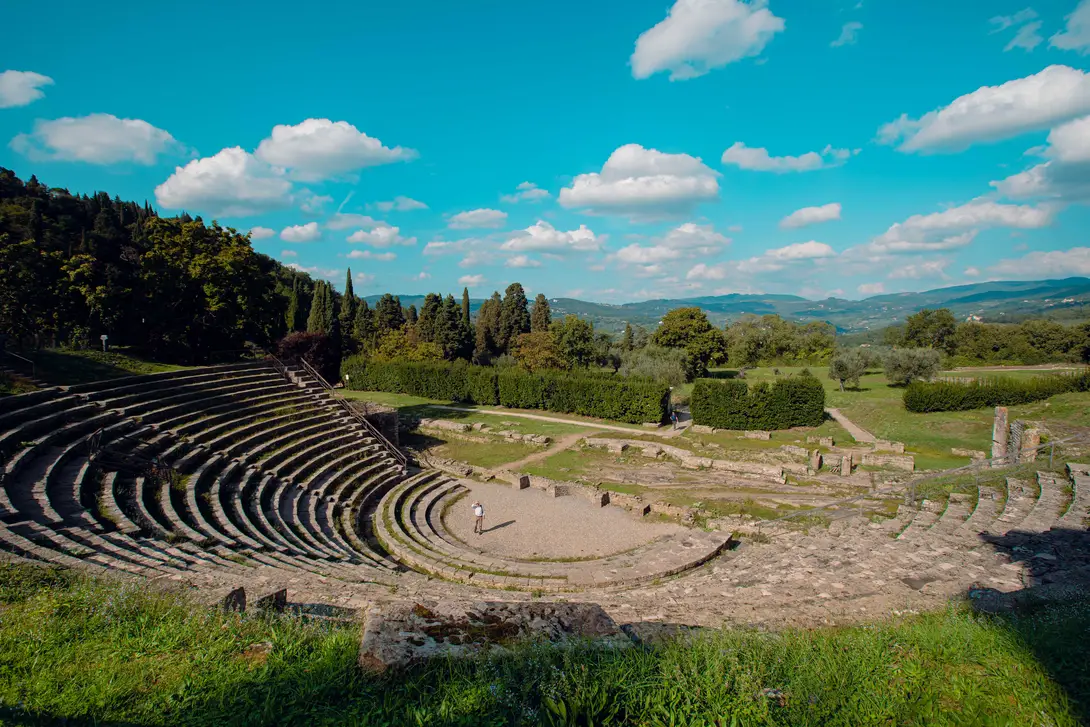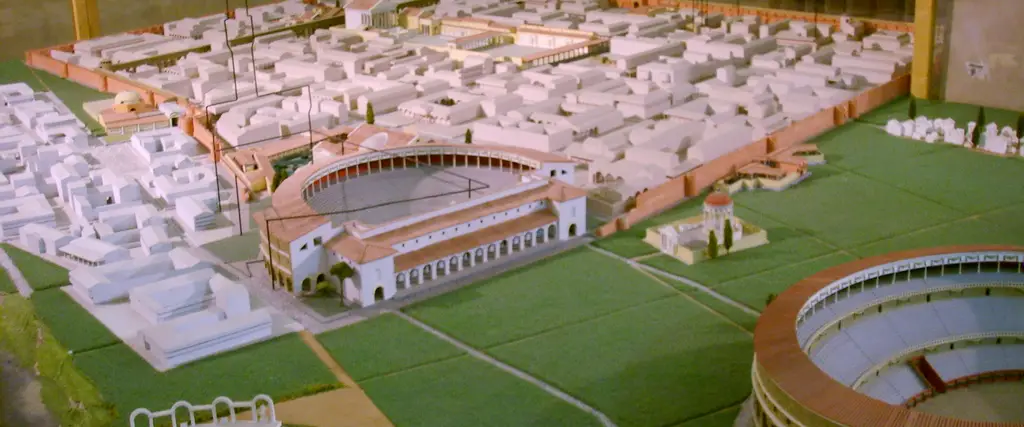
Roman Florence
Florence is famous worldwide for its Renaissance identity, but it has many more faces worth exploring: first of all the most ancient… the Roman one.
In the historical center, many are the traces that remind us about the millennial origins of Florence. We don’t know the exact year of its foundation (maybe 59 b.C.), but there are no doubts that it originally was a Roman camp called Florentia. Looking at a map of the city we can clearly see that the street grid still retains the regular structure typical of a Roman castrum. The 19th-century Piazza della Repubblica was built where the ancient Forum used to be located, while the perimeter walls ran along today’s via Tornabuoni, piazza del Duomo-via Cerretani, via del Proconsolo - where the shape of the foundation of a tower is still visible in correspondence with the first city wall - and a segment of Lungarno. The Cardo (today’s via Roma, via Calimala) and the Decumanus (via Strozzi, via del Corso) intersected at the center of the Forum, where today stands the Column of Abundance in Piazza della Repubblica.
During the second half of the 19th century - especially during the years when Florence became the capital of Italy - the extensive works of “renovatio urbis” caused to fortuitously come across many traces of the Roman period that lay beneath layers of pavement and cobblestones: the most interesting discoveries were made during the demolition of the Mercato Vecchio, “Old Market” (now Piazza della Repubblica). Further discoveries were made in the 1980s, during the repaving of Piazza della Signoria. Many of the remains were only temporarily brought to light: the Forum and the Tempio Capitolino of Piazza della Repubblica, the thermal baths and the villa beneath the Baptistery, the imperial thermal baths and the fullery found underneath Piazza della Signoria, and the section of Cardo found under via Calimaruzza. But many others can still be easily reached by descending only a few steps, portals to the past. The most important one is the Roman Theater underneath Palazzo Vecchio; and there are also the remains below Torre della Pagliazza (in piazza Sant’Elisabetta) and the ancient headquarters of Arte dei Giudici e Notai (Guild of Judges and Notaries), in via del Proconsolo 16r, presently occupied by a restaurant. Let’s not forget the Crypt of Santa Reparata, dating back to the Paleochristian period, which can be accessed from the interior of the Cathedral.
Undoubtedly, Florentia’s Roman roots are clearly shown by the regular-shaped street grid of its historical center, typical of former Roman camps, as well as by several street toponyms (via delle Terme, for the presence of thermal baths; via di Capaccio = Caput Aquae, via Calimala = Callis Maia, main street). Also Ponte Vecchio, the bridge symbol of Florence, was built where its Roman predecessor originally stood, as evidenced by some recent findings in the river bed.
In the 15th century, in the spirit of Humanism and Renaissance, Florence, as well as many other cities, showed a new awareness of its own glorious roots. Cosimo I de’ Medici celebrated his territory’s Etruscan origins (ancient Tuscia) by establishing the Grand Duchy of Tuscany in 1569.
The best places to find out more about Tuscany’s history are definitely the National Archaeological Museum of Florence, where important Etruscan-Roman masterpieces are exhibited, and the beautiful Archaeological Area of Fiesole.
Comune di Firenze
Useful information
The places
Stages
Palazzo Vecchio - Excavations of the Roman Theatre
The imposing Palazzo Vecchio was born on the ruins of the Roman Theatre of Florentia. Just a few steps downstairs and you find yourself back in ancient Rome!
The theatre could host 10 thousand people, with a diameter of about 100 meters; the cavea headed towards piazza Signoria, the scene towards via de’ Leoni. It was built immediately after the foundation of the colony named Florentia and then enlarged, at the beginning of the second century a.C., as the city significantly grew.
Unlike the anphitheatre located in Santa Croce district, this one was basically used to stage prose theatre until the 5th century. Then, it was subjected to spoliation and abandon and some of its spaces improperly used, such as the “Burelle” (radial corridors). In the 19th century part of the cavea came to light, but only thanks to the archaeological excavations, ended in 2010, was finally possible to open this site to the public.
Crypt of Santa Reparata (inside the Cathedral)
Inside the Cathedral steps lead down to the excavations that uncovered the ancient cathedral of Santa Reparata,evidence of the earliest Christianity in Florence, demolished after the new cathedral had been completed. Probably begun in the 6th century and then modified in the Romanesque age (addition of the crypt), the church remained in use while the new building was being erected.
Currently there are Roman and medieval finds, tombstones and fragments of the polychrome mosaic floor with geometric decorations. And it is here that the architect of the dome, Filippo Brunelleschi, is buried.
Archaeological Museum of Florence
The National Archaeological Museum, one of the most important, of this kind in Italy. houses masterpieces of the Etruscan, Greek-Roman and Egyptian art. It's inside the 17th century Palazzo della Crocetta, to which the Medici and Lorraine collections of antiquities were transferred from the Uffizi at the end of the 19th century.
The main core of works relates to theEtruscan civilization, including the large bronze statues of the Chimera and the Arringatore (Orator), plus an impressive selection of funerary sculptures (sarcophagi and urns), Greek pots and Attic ceramics, the highlight of which is the large black-figure crater known as the François Vase, which is decorated with mythological subjects.
The museum hosts a relevant collection of Etruscan andRoman bronzes, jewellery and ancients coins, some of which are unique worldwide. The collection of theEgyptian Museum, second in Italy only to the one in Turin, was put together mainly as a result of a French-Tuscan expedition to Egypt in 1828. It comprises materials ranging from the prehistoric period through to the early Christian era: vases, sculptures, sarcophagi with mummies, papyruses, amulets and small bronzesfrom various ages.
In the garden outside there are a number of reconstructed archaeological monuments. The garden is closed to the public.
The museum and its collections are suitable for very young visitors. Workshops and activities for family and children are occasionally organized in the museum’s rooms.
______________________________________________________________
Attention, due to important renovation works, until the end of 2026 the entrance is from via della Colonna 38 (the ancient entrance), and not from Santissima Annunziata Square
Archaeological Museum and Archaeological area
The museum exhibits chart the ancient history of Fiesole and the surrounding area: human presence in the zone dates back at least as far as the Bronze Age (around 2000 BC), while the cityitself began to develop at the end of the 4th century BC. Fiesole was an important Etruscan settlement, occupying a strategic position controlling routes between southern Etruria and the Etruscan settlements in the Po area, and a bulwark against invasions from northern peoples, in particular the Gauls. It became a Roman colony in 80 BC, though it retained its Etruscan characteristics: in fact, the Romans chose to settle in the valley, founding Florence.
The museum is connected to the Archaeological Zone, comprising the excavations of a theatre, baths and an Etruscan-Roman temple. The museum also houses the Costantini Collection, consisting of ancient Greek vasesand a reconstructedLombard tomb. Also of note are various Etruscan bronzes, black- and red-figure Greek and Etruscan ceramics, and marble friezes from the Roman theatre.
